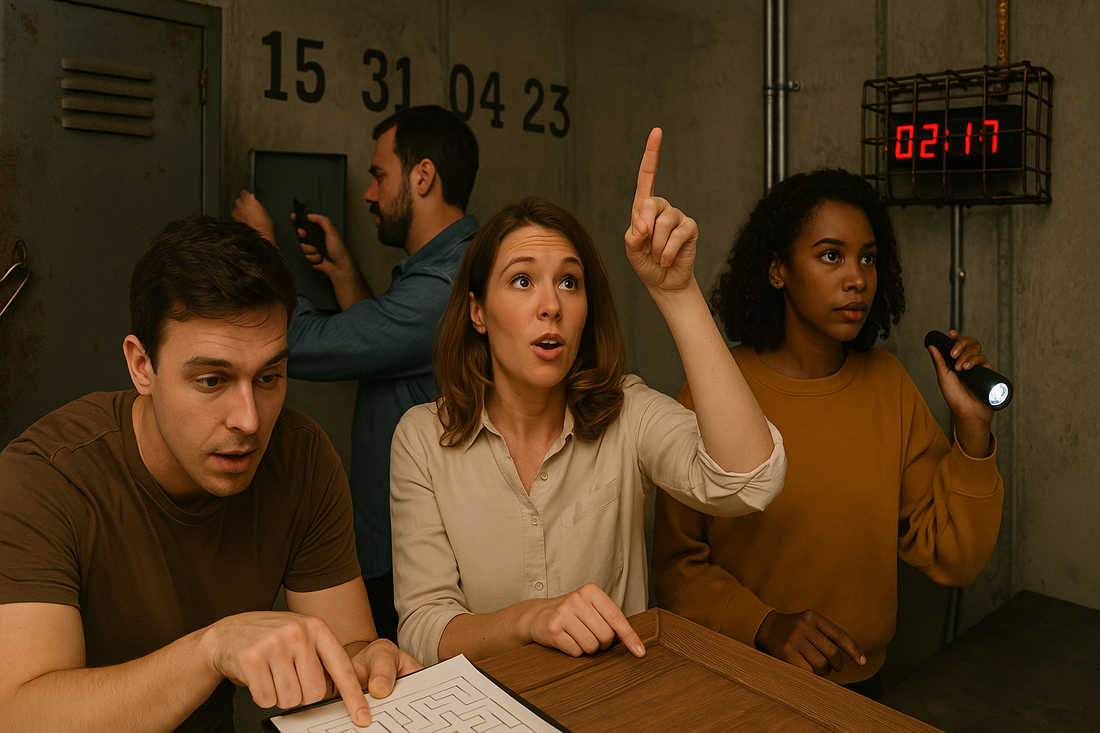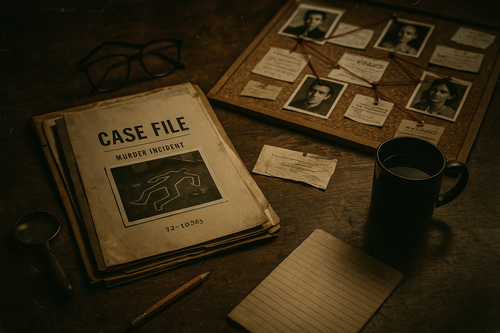
Escape Rooms: Locked In, Geeking Out, and Loving Every Minute
Share
Someone’s locked you in a room, and you have one hour to escape. That might sound like the plot of a bad thriller, but it’s also the setup for one of the most fun, frustrating, and occasionally friendship-testing experiences out there: the escape room.
Escape rooms have exploded in popularity over the past decade, and it’s not hard to see why. They scratch that itch for adventure without requiring you to, you know, actually fight pirates or rob a casino. Whether you're into puzzles, teamwork, or just yelling "TRY THE KEY AGAIN!" every few minutes, there's probably an escape game out there with your name on it.
But what is an escape room, how do you play one, and how much should you be paying for all this brain-bending chaos? Let’s break it down.
How Is an Escape Room Game Played?
At its core, an escape room is a live-action puzzle adventure. You and your team are "locked" (not always literally) in a themed room and given a mission. That mission might be to escape, defuse a bomb, find a hidden treasure, or stop a mad scientist from releasing a virus—the possibilities are endless, but the goal is always the same: solve your way out.
Here’s how it usually goes:
-
The Setup: A game master welcomes you, gives a briefing, maybe sets the backstory. You might hear something like, "You are a group of archaeologists trapped in a tomb. You have 60 minutes before it collapses!"
-
Search Everything: Once inside, the first rule of escape rooms is: touch all the things. Open drawers, flip cushions, peer behind paintings. Hidden clues are everywhere. And half the fun is figuring out which are useful and which are just there to mess with you.
-
Solve the Puzzles: You’ll encounter a mix of logic puzzles, number locks, physical challenges, riddles, and clues that stack on each other. Collaboration is key. You might find a key in a fake plant that opens a box with a code you deciphered from Morse on the wall.
-
Ask for Clues (No Shame): Most places let you ask for help if you're stuck. You can usually buzz or wave at a camera, and the game master will send you a hint. Use it. You’re not less smart—you’re just making sure your hour doesn’t end with you arguing over a Sudoku.
-
Escape (or Don’t): If you solve everything before time’s up, congrats! You escaped. If not, you still get the post-game breakdown where you figure out what you missed and say, "UGH, we were SO close!"
Which Is the Best Escape Room Game?
Ah, the million-dollar question with no one-size-fits-all answer.
The "best" escape room game depends a lot on what you're into. Some people love story-rich, cinematic games where everything is high drama and mood lighting. Others just want fast-paced puzzle machines where the clues come thick and fast.
Here are some things to consider when picking your perfect game:
-
Theme: Do you want spooky? Sci-fi? Bank heist? Time travel? Singapore escape rooms cover everything from horror to historical.
-
Puzzle Style: Are the puzzles logic-based? Physical? Tech-heavy? Some rooms lean hard into electronics and automation; others are more old-school with padlocks and hidden compartments.
-
Set Design: Immersion matters. A good escape room feels like stepping into another world. (A bad one feels like someone's converted storeroom.)
-
Difficulty Level: Not all rooms are created equal. Some are designed for beginners, others will leave even seasoned puzzlers scratching their heads.
If you’re in Singapore, you've got options. Xcape Singapore, Trapped, The Escape Artist, and Captivate are some local favorites. Each has different vibes and themes, so check reviews, ask your puzzle-loving friends, or honestly, just try a few.
Is the Escape Room Game Free?
Short answer: not usually.
Most physical escape rooms are paid experiences because they have to pay staff, rent, build elaborate sets, and keep things running smoothly. That said, there are some ways to get your escape fix without spending a cent:
-
Online Escape Games: During lockdowns, a lot of creators built digital or printable escape games. Some are free or pay-what-you-want. You can find these on websites like itch.io, or even in Google Forms (yes, really). Shameless advertising - we have a free escape room game too.
-
Apps and Mobile Games: Some escape-style puzzle games are available free on mobile. They aren’t quite the same as being locked in a room with your friends, but they can scratch the itch.
-
DIY Escape Room Kits: There are print-and-play or build-it-yourself escape games you can do at home. Some are free; others are paid, but cheaper than going out. Great for families, classrooms, or parties.
Still, if you want the full experience—the physical searching, the set design, the timer ticking down while your friend shouts, "I SWEAR THIS CODE WORKS!" — then booking a real escape room is absolutely worth it.
A Few Quick Tips (Learned the Hard Way):
-
Split up and communicate: Don’t all huddle over one thing. Divide and shout findings across the room.
-
Don’t overthink: Sometimes the code is literally written on the wall. Not everything is a red herring.
-
Be nice to your game master: They’re your lifeline. Respect the room. Don’t try to break open the locked cabinet with brute force.
-
Wear comfortable clothes: You're probably going to crawl, crouch, or climb something. Heels are a trap.
Whether you're a first-timer or a puzzle veteran, escape rooms offer this rare combo of brainy fun, social connection, and just the right amount of stress. You might not always escape, but you’ll almost always walk out laughing, planning your next attempt, and already blaming Steve for solving that one clue way too slowly.
And hey—if you're the kind of person who loves a little mystery and a little puzzle-solving... well, you’ll probably find some other games that hit that same sweet spot.
But that’s a clue we can save for another post.



